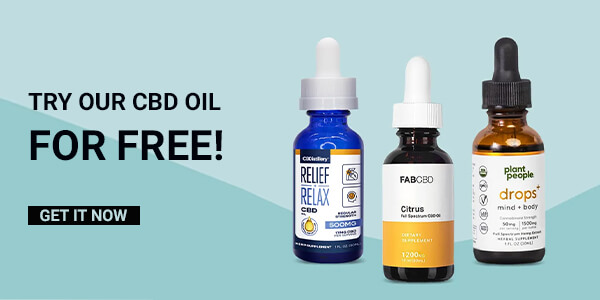While pure CBD has an earthy and grass-like flavor, most CBD oils are comprised of carrier oils, influencing the product’s flavor. Some companies use coconut or hemp seed oil to counterbalance the CBD’s astringency.
Numerous individuals have resorted to CBD oil to address various health conditions. It is a liquid extract of the cannabis plant with a high concentration of CBD, which is thought to have therapeutic properties. Depending on the user, CBD oil is typically administered via dropper, capsule, or vaporizer and may be taken as a dietary supplement or a medication. So, what does CBD oil taste like? Since CBD oil is derived from hemp, it lacks the earthy, savory flavor of marijuana. It can be added undetected to foods and beverages, providing it the ability to become more flavorful and efficient.
CBD Oil Taste in Terms of Flavor
CBD oil is often described as having a grassy taste. Unflavored CBD oil is a great option if you enjoy greens, earthy flavors, and foods with a bite, such as dark chocolate. Although most people can tolerate the taste, very few people describe it as either pleasant or appealing to try if they weren’t looking for CBD’s health advantages. Organic, highly concentrated CBD has a distinct flavor that some people find irresistible. Depending on your taste, you may enjoy most CBD oils if you prefer an earthier flavor. The bitterness of unflavored, high-concentration CBD oil is one of the most common complaints. CBD oil should be kept under the tongue for at least a minute to maximize absorption, which might be a problem for those who dislike the flavor.
Different Taste of CBD
You can tell if a product is organic and nontoxic if it has earthy tones. If the oil tastes sweeter or a little chemical, this can indicate artificial flavoring. It’s possible to alter the flavor of CBD oil by incorporating other ingredients. Below is a list of ingredients that make up the CBD taste.
Terpenes
Aromatic compounds called terpenes can be found in many plants, but they are particularly abundant in cannabis, where they contribute significantly to the plant’s distinct flavors. Many terpenes have medicinal properties, and there are hundreds of them. Cox-Georgian et al. (2019) noted that CBD oil infused with terpenes had been shown to reduce anxiety and promote sleep in users. The study also noted that other benefits include their ability to fight bacteria and reduce inflammation. This means that the flavor of each terpene is unique. Cannabis strains can be distinguished by their flavors, which significantly impact the high they provide. According to Ibrahim et al. (2019), terpenes are responsible for CBD’s distinct aromas and flavors that can be traced back to a specific batch. As a result, customers can choose terpenes that best suit their preferences. Pinene terpene has a distinct pine flavor, while myrcene has a more herbal flavor. Terpinolene also has a pleasant fruity aroma. Caryophyllene has a peppery flavor, while limonene is citrusy. The terpenes pinene and myrcene have a calming effect on the body and the mind. Terpenes such as limonene and terpinolene are stimulants.
Carrier Oils
The flavor and aroma of CBD oil are strongly influenced by the carrier oil utilized in the product. According to Wakshlag et al. (2020), carrier oils in CBD oil enable greater absorption of the substance. There are several common ways to incorporate CBD into your diet, including olive oil, hemp seed oil, and coconut oil. So, which one should you keep an eye on?
Coconut Oil
A common ingredient in most CBD oils, this is a common carrier oil. It’s not just that it’s packed with healthy fats, but it also tastes light, clean, and fresh. CBD oils combined with olive oil may have a flavor similar to cooking oil. They have a mild flavor, with a hint of nuttiness or grassiness.
Hemp Seed Oil
Blasi et al. (2022) suggested that hemp seed oil makes your CBD oil seem brown or dark green and enhances the hempy flavor. Some people compare the flavor to that of walnuts or sunflower seeds.
Adding CBD Oil to Food and Drink
Even if you don’t like the taste of CBD oil, you can add it to your favorite foods or beverages. You may also find CBD-infused recipes online.
Some of the most popular options are:
- Mints or gum are a good option. Be sure you take one of these first. The strong minty flavor will dominate the CBD oil’s taste, so you won’t even notice it’s there. To mask the taste of CBD, chewing on a mint or a piece of gum after you’ve held the tincture in your mouth long enough should work.
- Combine in a smoothie or with yogurt. The CBD won’t be detectable if it’s mixed with these foods. It is, however, possible to delay the effects of CBD oil by taking it with food.
- Put on a chaser. Beverages are great for diluting the CBD’s effects. You get the same effect as after-shot lime or lemonade. Replace the CBD flavor in your mouth with something you enjoy by “chasing” the flavor away.
- Mixing CBD oil with a food or beverage can make it tastier, but it also reduces the absorption of CBD and diminish its effects. So, if you decide to go this way, watch your caloric intake. We’ll also advise you on how to improve the taste of your CBD oil without sacrificing its potency.
Tips on Choosing the CBD Oil You Like
What’s the best way to pick a CBD oil that’s right for your palate? To get you started, here is a list of things to keep in mind.
- Consider the base oil.
- Try CBD flavored oil.
- To begin, use lower concentrations.
- Add it to your favorite foods and drinks for a tasty combination
- Gummies or capsules are a better option than tablets.
Conclusion
When shopping for CBD oil, locating a product that suits your preferences is easier if you have some idea of the taste profiles available. It is ideal for sampling flavored and unflavored options to determine your preference. Unfortunately, some of the most beneficial compounds, like CBD oil, are unpalatable to the human tongue. However, consumers may now choose and choose from a wide variety of flavors on the market. Everyone will be able to handle at least one flavor. Before using any CBD product, it is imperative to see a doctor.
References
Blasi, F., Tringaniello, C., Verducci, G., & Cossignani, L. (2022). Bioactive Minor Components Of Italian And Extra-European Hemp Seed Oils. LWT, 158, 113167.
Cox-Georgian, D., Ramadoss, N., Dona, C., & Basu, C. (2019). Therapeutic And Medicinal Uses Of Terpenes. In Medicinal Plants (Pp. 333-359). Springer, Cham.
Ibrahim, E. A., Wang, M., Radwan, M. M., Wanas, A. S., Majumdar, C. G., Avula, B., … & Elsohly, M. A. (2019). Analysis Of Terpenes In Cannabis Sativa L. Using GC/MS: Method Development, Validation, And Application. Planta Medica, 85(05), 431-438.
Wakshlag, J. J., Schwark, W. S., Deabold, K. A., Talsma, B. N., Cital, S., Lyubimov, A., … & Zakharov, A. (2020). Pharmacokinetics Of Cannabidiol, Cannabidiolic Acid, Δ9-Tetrahydrocannabinol, Tetrahydrocannabinolic Acid And Related Metabolites In Canine Serum After Dosing With Three Oral Forms Of Hemp Extract. Frontiers In Veterinary Science, 505.
Barbara is a freelance writer and a sex and relationships adviser at Dimepiece LA and Peaches and Screams. Barbara is involved in various educational initiatives aimed at making sex advice more accessible to everyone and breaking stigmas around sex across various cultural communities. In her spare time, Barbara enjoys trawling through vintage markets in Brick Lane, exploring new places, painting and reading.
[email protected]
- Made By Hemp 2022 CBD Gift Guide - February 4, 2023
- Delta 8 THC in missouri: is it legal & where to buy it in 2022? - October 25, 2022
- Delta 8 THC in mississippi: is it legal & where to buy it in 2022? - October 25, 2022








